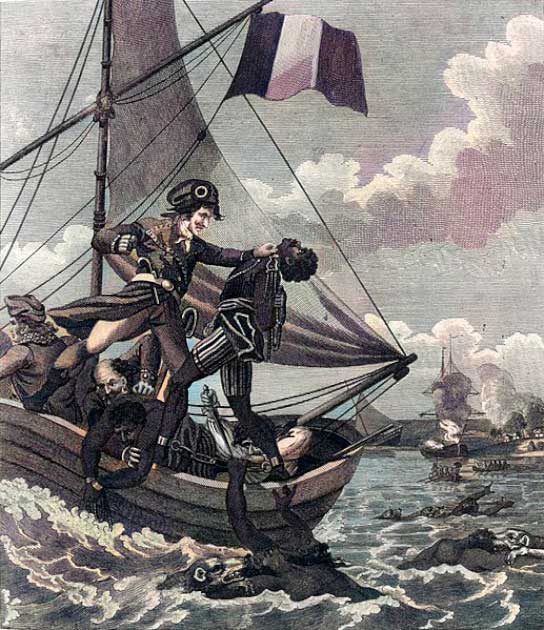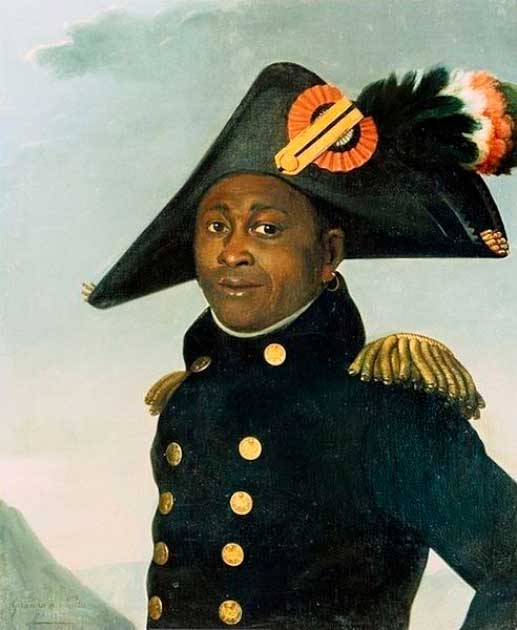The Haitian Revolution has been described as the largest and most successful slave revolt in the Western Hemisphere. The Haitian natives, who were once slaves under the French and saw their country turned under them into a French colony, defeated the colonial government after 14 years of fighting.
The revolution in Haiti started in 1791 and was finally successful by 1804. The revolution not only ended slavery and discrimination against the natives, but it also ended French control over the country. The Haitian revolution has a complex history, with smaller revolts happening all over the country at the same time.
Inspired by the French?
The Haitian revolt against the French started in the year 1791. The French Revolution had occurred only two years before in the year 1789, and it seemed liberty was contagious. In fact, the Haitian revolution upheld Liberty as its highest ideal of struggle, an idea that was highlighted by French philosophers.
The leaders of the revolution in Haiti were influenced greatly by the ideals of the French Revolution, like universal citizenship, basic human rights and equality. But there were other forces at play also, chiefly a growing unrest amongst colonial colonies of all stripes.
Even before the French Revolution, the colonization of Caribbean countries was criticized by scholars and philosophers. And one of the most important French colonies of that time was Saint Domingue, which was later renamed Haiti. The colony had 500,000 slaves, and only 2,800 free native citizens.

The thousands of Saint Domingue slaves worked in sugar, cotton and coffee plantations. One-third of the plantation properties were under the ownership of free native citizens who grew wealthy under the system.
However, the system only worked if it was rigorously policed: native citizens were denied the right to govern and hold government offices, regardless of their wealth. The slave system was put in place through a series of royal edicts from the French “Sun King” Louis XIV.
- The Glorious Revolution: Did the Dutch Steal the English Crown?
- Clairvius Narcisse and His Haitian Zombie Experience
The edicts were compiled to create what was known as the Code Noir, which governed the slave system in French colonies. There were always tensions between the plantation owners and the slaves. The plantation owners would be afraid of slaves running away or practicing voodoo magic on their owners. The owners were also afraid of being poisoned by the slaves they owned.
After the 1789 French Revolution, even white planters in the colony demanded independence. The demand for independence from France came from white planters and artisans who owned a few slaves because France was not allowing them to trade with any other country.
The increased tariff on imported products into the colony was another reason for the cry of independence to go up. Moreover, the white population of Saint Domingue did not have any representation in the French government which made them feel alienated from France. However, the white planters and black artisans did not want to abolish slavery in the colony, only to secure it for themselves.
The natives of the colony were divided into three groups, the black artisans and wealthy families, the slaves, and the runaways. The runaways, known as the maroons, had retreated to the hills of the colony and lived off the land.
There was always resistance from the slaves because they outnumbered the whites and businessmen of the colony. There had been slave revolts before 1791, which saw the slaves killing their masters by poisoning.
The Beginning of the Haitian Revolution
After the French Revolution, the Haitian public revolted on a large scale, and there were many revolts in different places in the country. When the Haitian representatives attempted to put in a system similar to the French Parliament, the French responded by giving some autonomy to local authorities in the colony.
However, this largely favored the white population of the colony. This led to a civil war between the white planters, the wealthy black class of “Petits Blancs” and free natives. However, the fourth side, which opposed all three classes, was that of the slaves themselves, and the runaway maroons.
In August 1791, the situation changed drastically. The previous scattered uprisings were replaced by a united, organized revolt as the slaves came together under the leadership of former slave Toussaint L’Ouverture. By 1792, the slave rebels controlled around one-third of the colony.
- Republican Marriage: The French Revolution’s Brutal Execution
- Ludger Sylbaris: The Man who Survived Doomsday in a Prison Cell
There was extensive violence on both sides, and more than 100,000 slaves had died in the revolt by 1793. However, because of the violence and the sheer number of slaves, the land under their control grew over time.
The slaves were gaining ground, and after the deaths of 24,000 of the 40,000 Whites and Mulattos on the island the authorities recognized that situation had become untenable. In 1793, the French called upon British troops to increase the number of soldiers against slaves.

Despite the British reinforcements, L’Ouverture and his men continued to press their advantage, and by 1798, both the British and the French had left the colony to save themselves from frequent defeats. By 1801, not only Saint Domingue but the neighboring Spanish colony of Saint Domingo was also freed by slave rebels. Today, Saint Domingo is the Dominican Republic.
By this time the French had a new leader who was unimpressed with the results to date. French Emperor Napoleon Bonaparte sent his brother-in-law with 43,000 French troops to restore the colonial status of Haiti.
The French were almost successful, and they even captured the rebel leader L’Ouverture. L’Ouverture died in a French prison shortly after his arrest.
After the death of the former rebel leader, Jean-Jacques Dessalines, his trusted general and himself a former slave, took his place and led the Haitian resistance. The final battle between the rebel forces and the French troops was the Battle of Vertieres, which happened in November 1803.
On January 1, 1804, the colony of Saint Domingue was declared independent by Dessalines, and the country was renamed Haiti. Haiti’s independence was first recognized by France, and it became, somewhat incongruously, the first African republic in the world.
Oh, what a tangled web we weave.
Top Image: The Battle for Palm Tree Hill, also known as the Battle of Saint Domingue. Source: January Suchodolski / Public Domain.
By Bipin Dimri